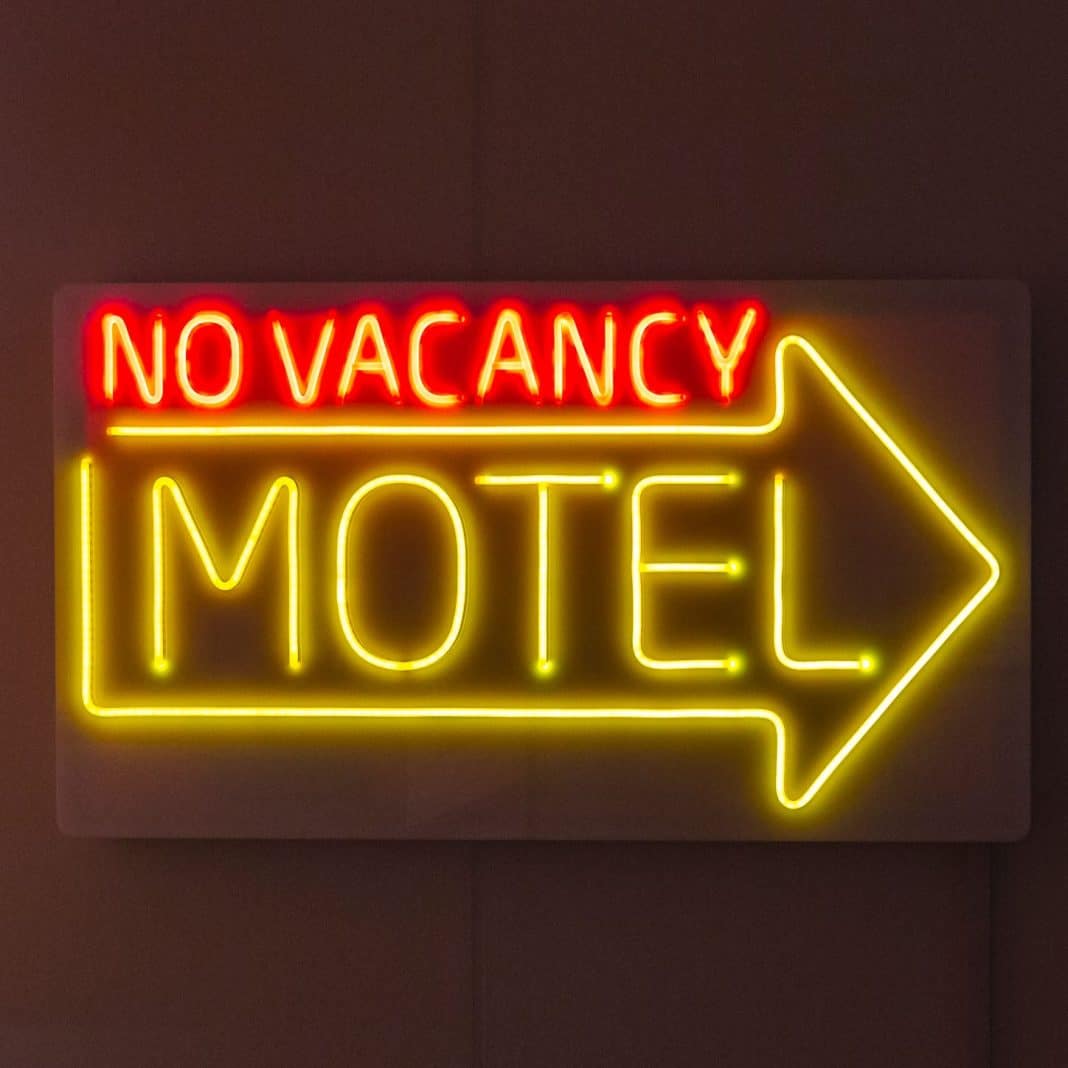In Reception this way: Motels – a sentimental journey with Tim Ross, all but two of the photographs on display come from the National Archives of Australia’s collection right here in Canberra, so CW thought it only fitting to explore the featured motels from our region.
Curator Catriona Donnelly’s favourite local motel from the exhibition happens to be the first motel built in the capital, Motel Canberra.
“We have fabulous nighttime shot of the cocktail lounge; I really love that image for its composition and the fact it’s like you’re looking into people’s lives, you can see them enjoying a drink in the lounge,” Donnelly said.
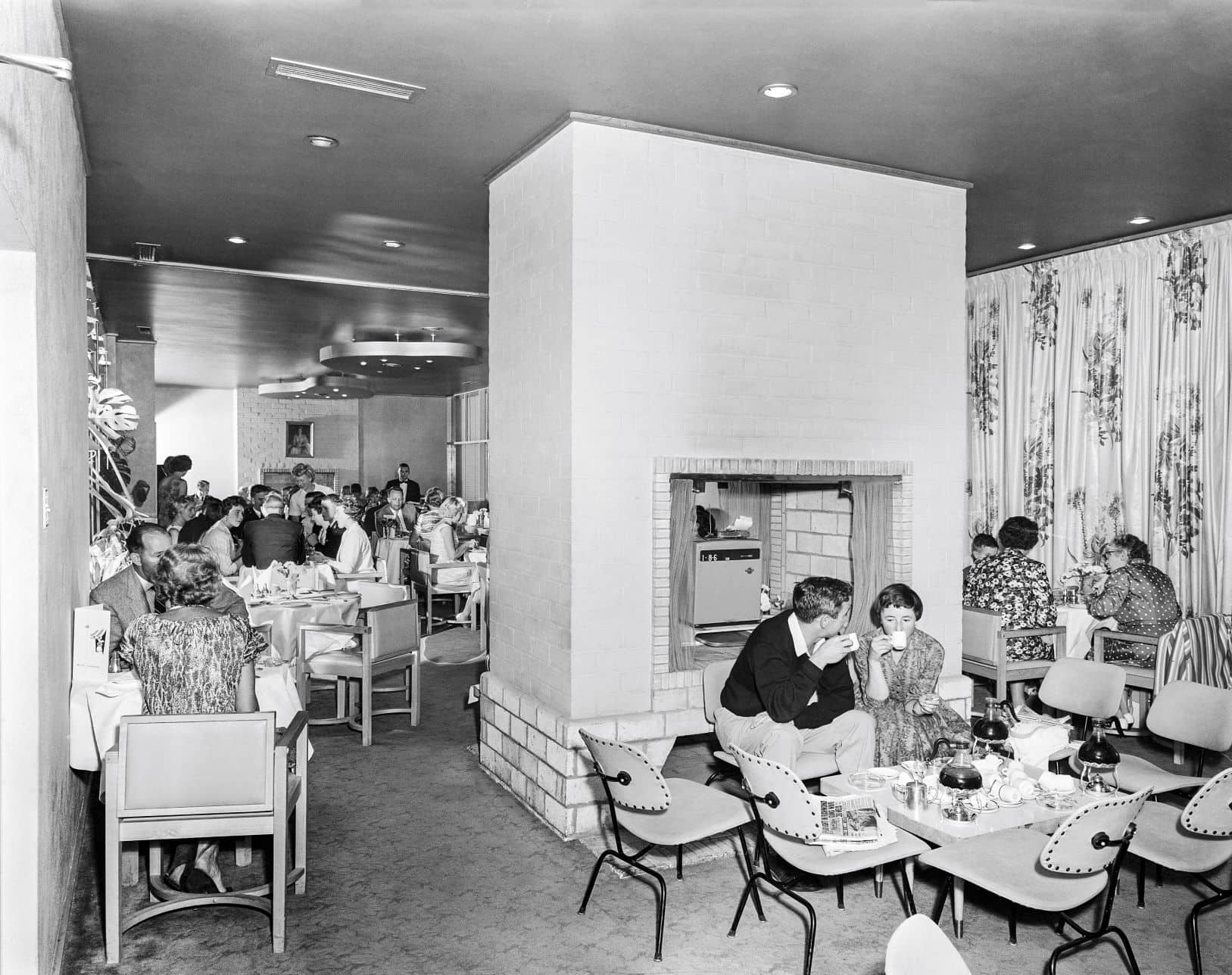
Motel Canberra was designed by a young man from Melbourne named Brian O’Connor who won a competition to design the first motel built in the ACT, after studying motel architecture as part of his degree. The motel first opened its doors in 1956, located on Northbourne Avenue near Dickson, which was a lot barer in those days. Donnelly described the motel as the perfect example of midcentury modern architecture. Sadly, it is no longer standing, however it has not been forgotten.
“We actually had a visitor recently who remembered it; she used to come to Canberra to visit her grandparents and she said it was like the marker to know they were almost there,” Donnelly said.
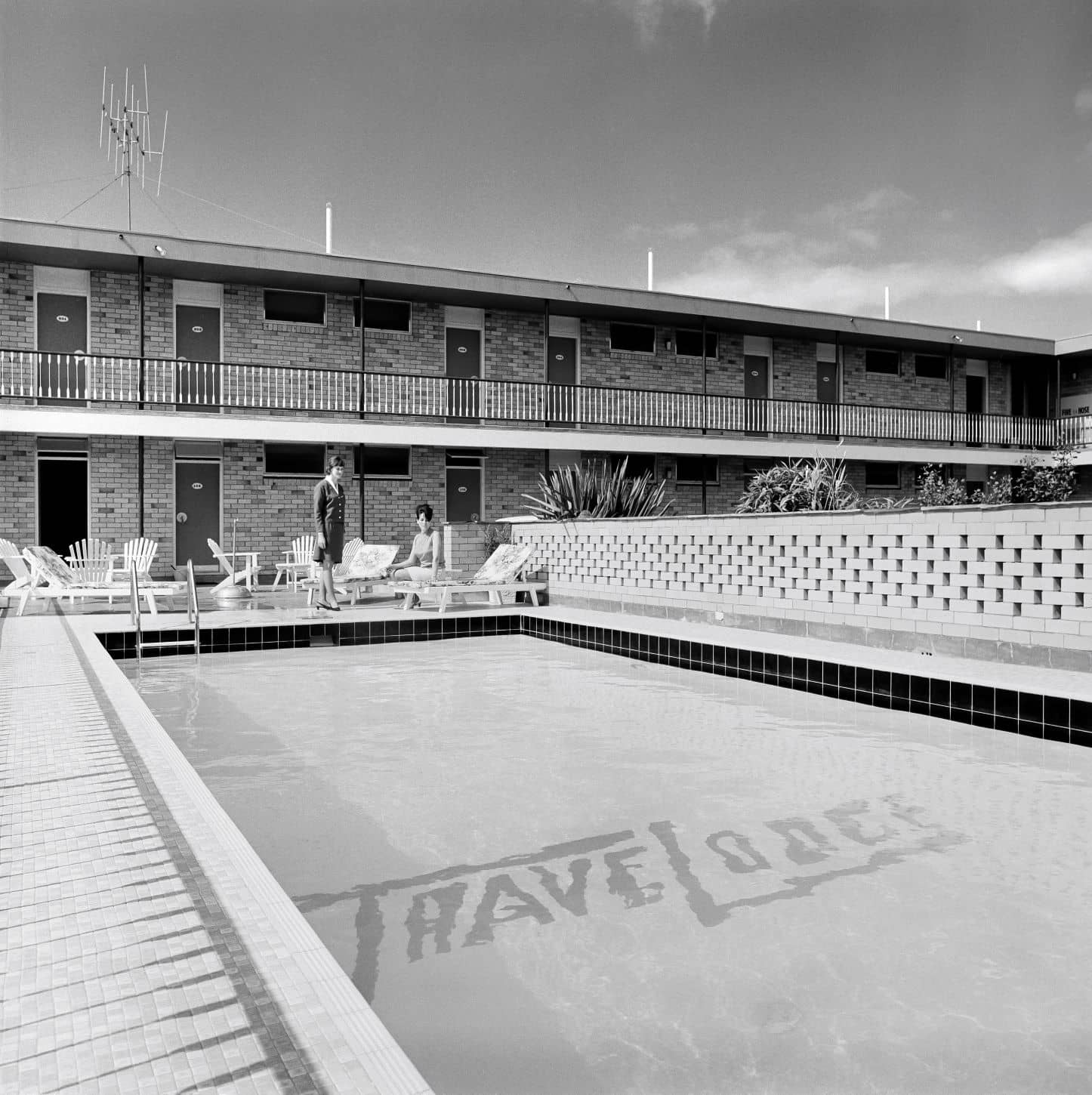
In 1962, a wild new kind of entertainment came to the capital – television. The Lyneham Travelodge was built ahead of its arrival, opening in 1960, however every room was equipped ready for the exciting new device to be installed. Being able to list television on its room amenities showed it as a place of luxury; most amenities then would include things like a radio, fan, and wall to wall carpet. Only the building’s exterior features in the exhibition, which depicts a relatively bland brick building with a swimming pool. According to Donnelly, a newspaper article from the time of its opening describes the inside as having gay curtains and bright colours. The Lyneham Motor Inn looks like it could be the same building as the Travel Lodge, however the owners could not be contacted for verification.
One of the other Canberra motels that feature in the exhibition sent the team on a bit of a fact-finding mission to uncover its name. All they had was the image showing a woman and two young children in a small pool, behind them a man sunbathes, and the building with two cars parked out front. The clue that led to the name’s discovery was in the background – the structural beams of an old drive-in. However, Canberra had two at the time. They checked a map from the period and deduced it must have been The Commodore Motel. After sharing a photo on Facebook, a man informed them that before it was The Commodore, the motel had been called The Astonaire and was home to Canberra’s first heated swimming pool. He gave them a pamphlet from the motel that features in the exhibition. This motel also now only exists in photos; it was redeveloped into the Chinese embassy for a time before being turned into apartments.
Donnelly explained that the Archives had so many holiday images featuring people enjoying themselves poolside and women in bikinis because they were originally taken as promotional images to boost domestic and international tourism.
Motels began popping up around Australia in the mid-1950s following a heightened level of optimism after World War II. Car ownership was dramatically increasing as more families could afford one and road conditions were improving.
The family car gave families the freedom to design their own itinerary and travel at their own pace; prior to having a car, travellers were reliant on train schedules and timetables.
“I think people were inspired by motels in America. Australia and America both have very long distances where people travel, unlike other countries where you can get to your destination in a few hours. Australia obviously was the perfect place to have roadside accommodation,” Donnelly said.
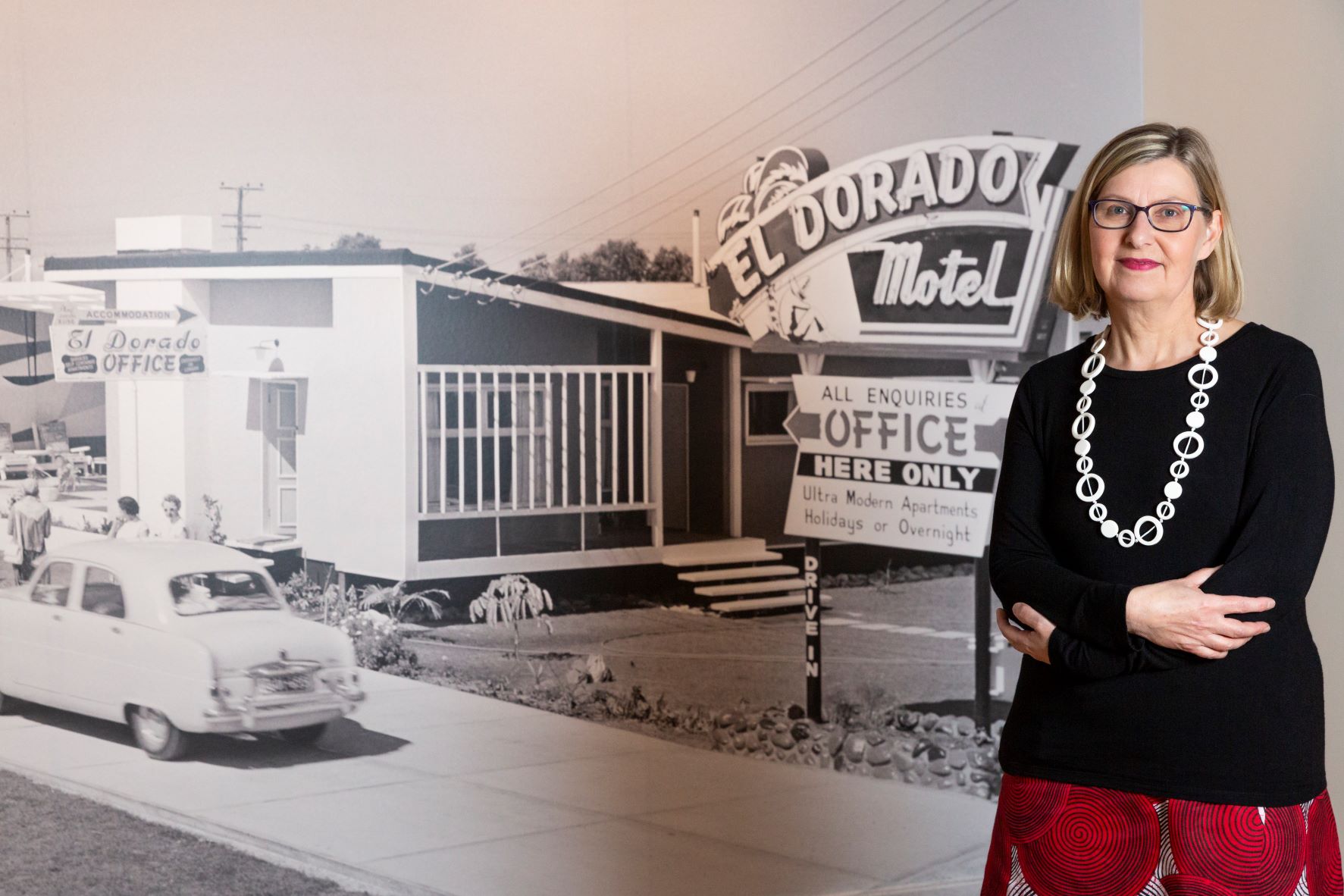
Part of the attraction at the time was the luxury that came with motels; the design was modern, something that couldn’t be replicated in homes. You were able to park your car right outside the door and you had your own bathroom and shower, whereas if you stayed at a country hotel or pub, you would have to share facilities with a floor of other guests.
The motels on display are from all over the country, many of which became resort like; the motel itself was the holiday destination. While at the exhibition, you can feel the joy and fun of hitting the road captured in the photos, bright colours run across the walls leading you through the different sections. One of the stops on the way allows visitors to share their favourite memories from vacations. According to Donnelly, guests have been spending as long there reading through the stories left as they have in the rest of the exhibition.
“People have really fond memories of things like the breakfast, which is, I guess, something that you maybe don’t appreciate. It is a very motel-based experience; getting your breakfast delivered to your room, filling out the form the night before, having soggy toast or whatever it is. People are really responding to that kind of memory.”
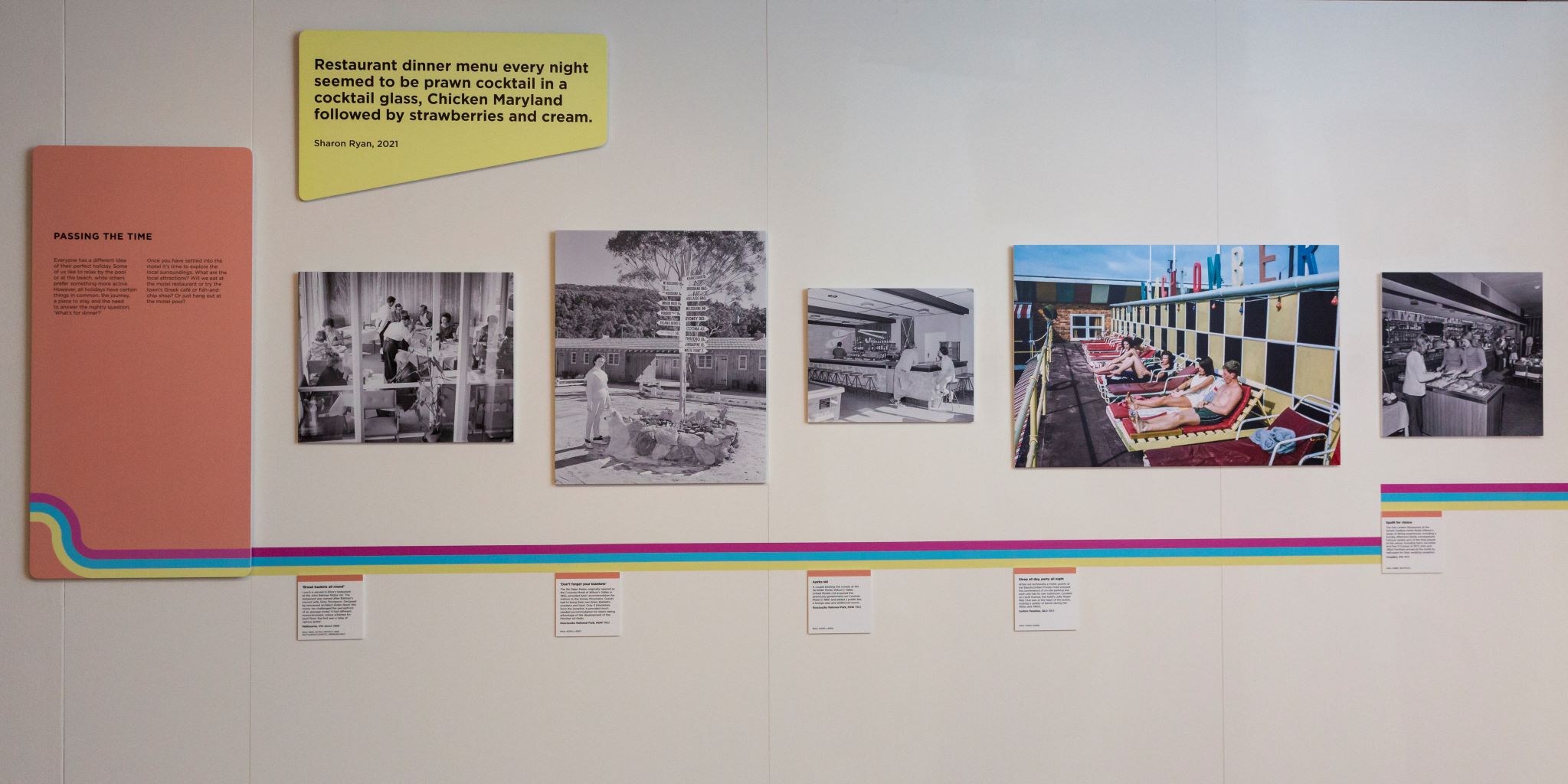
Long before the exhibition opened at the Archives, comedian and author Tim Ross took a family road trip to the Dubbo zoo, and spent time staying at a local motel.
“The kids were jumping on the bed like my brother and I used to. It was like seeing a super 88 film of myself and thought there was something magical about it,” Ross said.
When he returned home, Ross and his best friend and frequent comedy partner, Kit Warhurst, wrote a song about the experience, which audiences loved so much he was able to create an entire show around the motel experience. After the show came a book, which Tim spent time researching and sourcing photos from the National Archives. The Archives team approached him and suggested turning it into an exhibition.
“There’s a real joy to it, archives can sometimes make people go that’s old and stuffy but really it’s just moment in time, memories.”
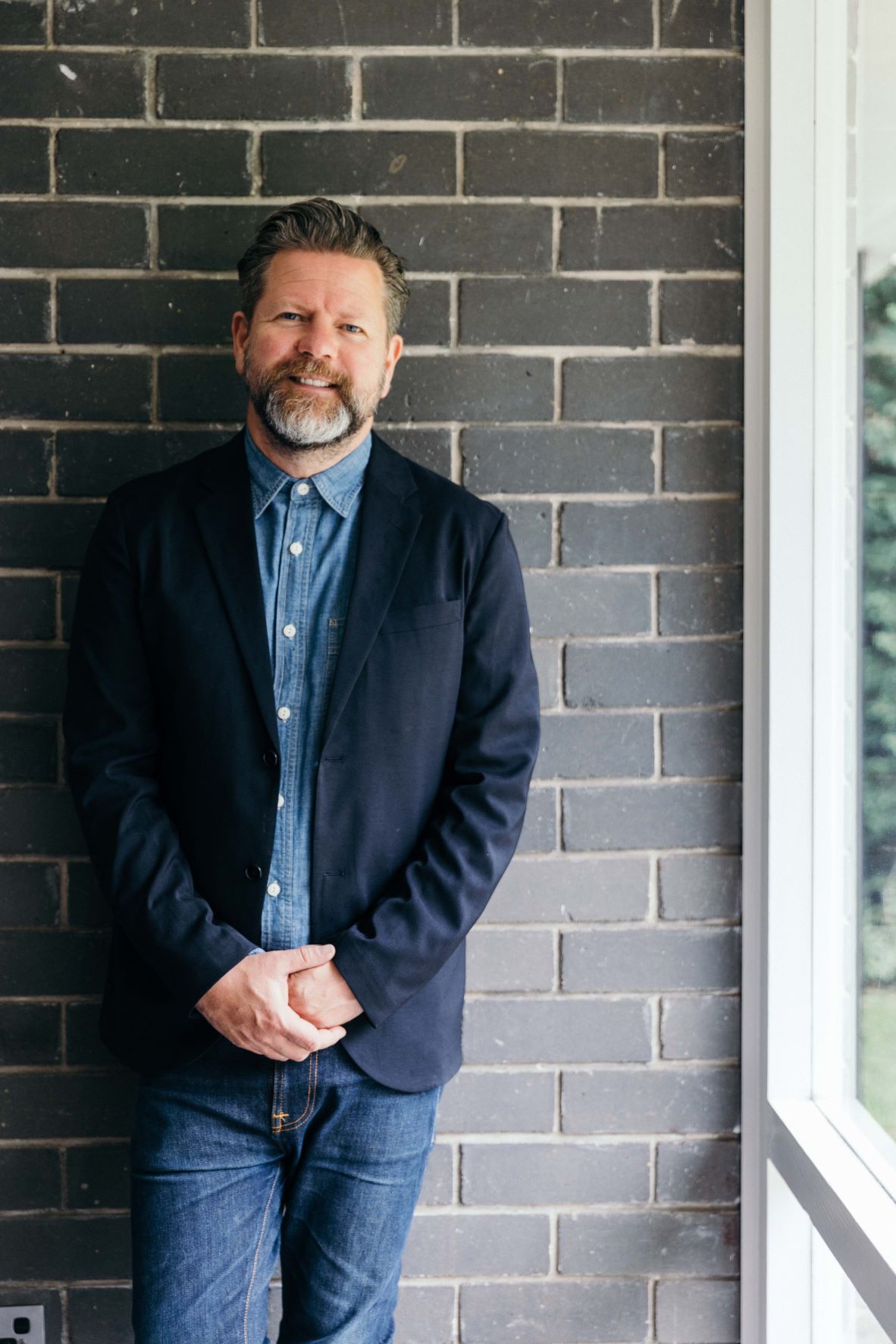
Ross has always been drawn to architecture, growing up in the suburbs of Victoria’s Mornington Peninsula in the 1970s and 1980s, which he describes as an interesting time in architecture, one that is mirrored here in the Capital. Ross speaks highly of Canberra, not only of its buildings, but also the people, things to do, and the story behind its inception.
“Unique sense of nationalism that doesn’t feel like a class mould, we created something new for us, we created a new city. The buildings, the offerings. The sense of optimism I feel from it, I never get tired of the chance to see all the great houses and buildings.”
So, where does the self-confessed motel aficionado stay when he visits the Capital? Ross’s current go-to is Midnight Hotel in Braddon. Before that, it was local icon the Hyatt Hotel Canberra, which he describes as a fun place, or Hotel Hotel before the change of ownership.
Ross’s favourite image from the exhibition is one that was taken in the Northern Territory. In the forefront of the image is a woman in a bikini, but it is a man in the background that steals the show. Even though it is obviously a hot summer’s day, he is dressed in a pair of jeans and a woollen jumper.
“I’m just waiting for some explanation; I’m waiting for someone to say ‘that’s my grandpa’,” Ross laughed.
One of the architects who designed several motels featured in the exhibition was Robin Boyd, who was well known for his distaste for the neon, kitsch style of American motels.
“He misunderstood why we liked them; I understand where he was coming from, but I think he was being a bit of a snob,” Ross aid.
Boyd’s motels were designed to be more sympathetic to the landscape, using duller tones and shapes; he went on to become one of Australia’s most well-known architects.
Ross thinks the bright colours and neon signs were and still are an important part of not only Aussie culture, but the importance of not blocking ourselves off from influences from the rest of the world. He said walking into one of the motels back in their heyday would have been like walking into an Elvis movie.
“He [Boyd] got us wrong; the proof he got us wrong is the reason this exhibit exists,” Ross said.
That’s the story about how a family trip to the zoo inspired a nostalgic exhibition at the Archives and a book.
Take a trip to Reception this way: Motels at the National Archives of Australia until 4 September; naa.gov.au
Canberra Daily would love to hear from you about a story idea in the Canberra and surrounding region. Click here to submit a news tip.

